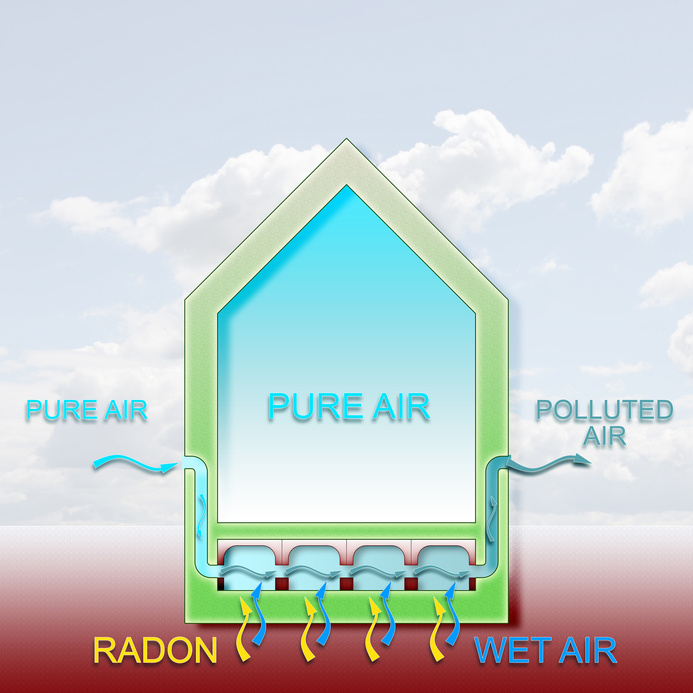 Radon is a dangerous chemical element that produces a colorless, tasteless, radioactive gas. When ingested, it can be extremely dangerous and is the second leading cause of lung cancer nationwide. This gas is formed when chemicals in rocks and soil around your home break down, and the gas can move into the air and water systems without a trace.
Radon is a dangerous chemical element that produces a colorless, tasteless, radioactive gas. When ingested, it can be extremely dangerous and is the second leading cause of lung cancer nationwide. This gas is formed when chemicals in rocks and soil around your home break down, and the gas can move into the air and water systems without a trace.
Because it is incredibly dangerous, it is important to invest in radon gas testing, especially if you live in an area known to have a high amount of naturally occurring uranium. Here are the different techniques of radon mitigation and abatement, explained.
Radon Gas Testing Methods
Most radon mitigation jobs begin with testing. First and foremost, it is important to note that there are two types of radon testing. There are short term detectors, which measure radon levels for up to 90 days, and long-term tests, which determine the average concentration for more than three months. The U.S. Environmental Protection Agency recommends that radon contractors perform tests in the lowest level of a home. Short term tests often use charcoal canisters, while alpha track test kits and electret ion chamber detectors are commonly used for long-term testing.
Currently, the EPA recommends an action level of 4 picoCuries per liter (pCi/L).
Sub slab depressurization (SSD)
This is the most common form of radon abatement, and utilizes a fan and a PVC pipe to draw in air below the basement floor and then repels it through the roof. This fan prevents any dangerous underground air from entering your home, and expels all existing radon from the home. Typically with this method, the pipe will flow through your garage and the fan will be in your attic.
SSD with crawl space
Homes that have exposed dirt in their crawl space use SSD slightly differently. First, a plastic coating will be sealed onto the floor and walls, and then the contractor will rework the SSD system to run the pipe down through the plastic barrier. This way the pipe can access the contaminated air and expel it properly, while the plastic prevents it from entering in the first place.
Air exchangers
For those homes that have extensive additions or inaccessible crawl spaces, using a SSD system for radon gas testing can be difficult. Instead, air exchangers are used, which is similar to a complex fan. One side of the fan blows air out of the home, and the other side blows air into the house. While radon air exchangers won’t prevent the radon from entering the home, it dilutes the contaminated air with clean air from outside. For this reason, air exchangers are typically used as a last resort option.
Interested in learning more about radon abatement and mitigation in Colorado? Contact our professionals today.

Recent Comments